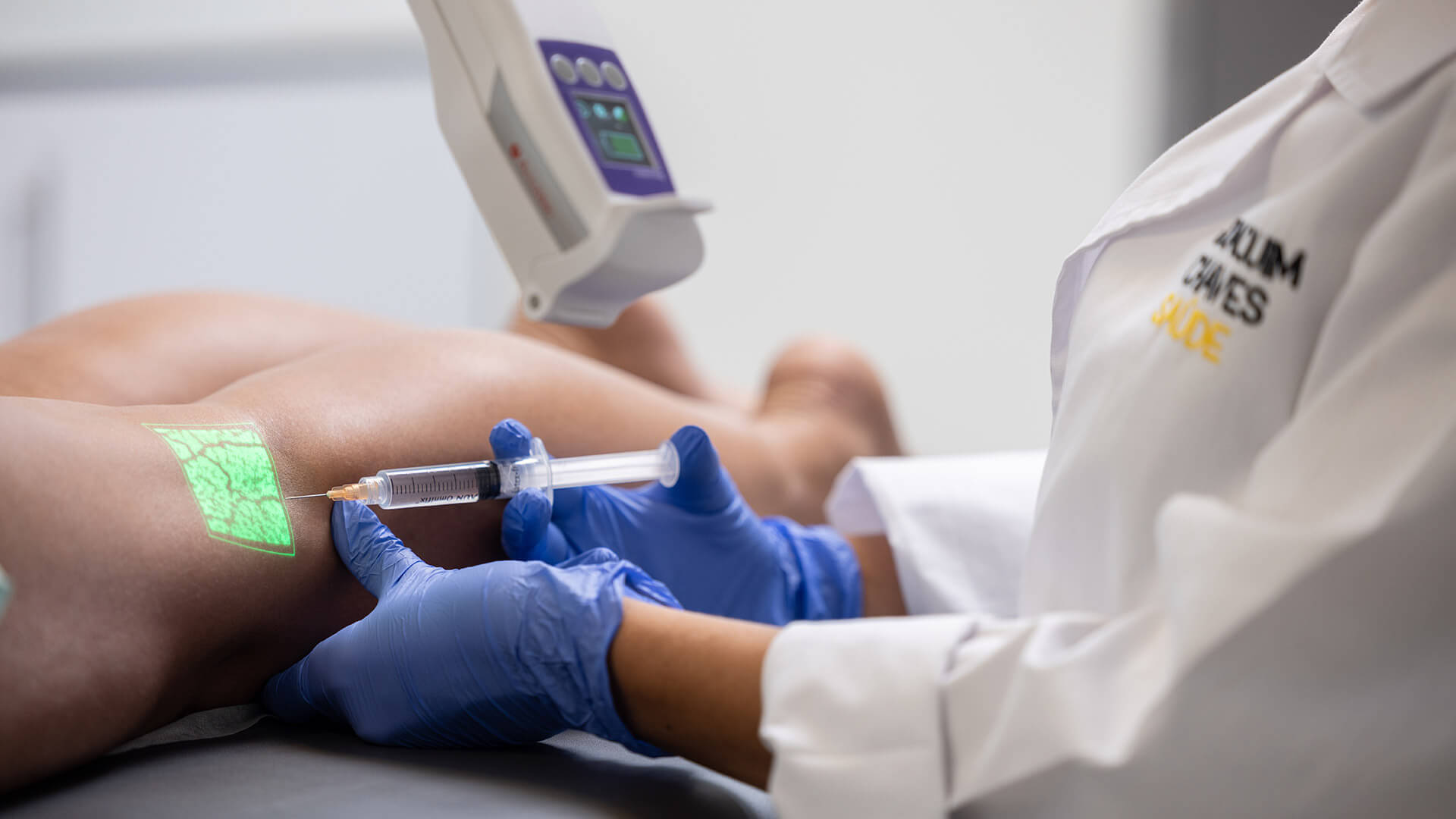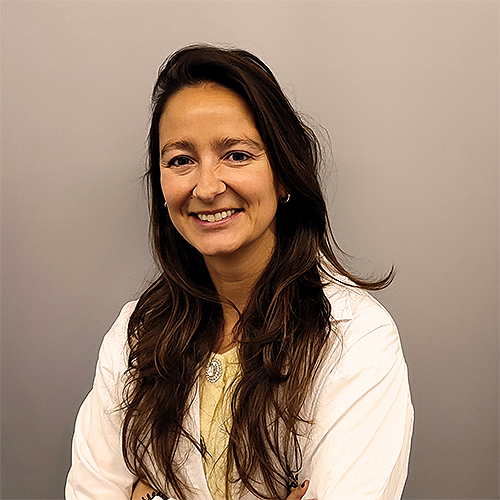Sclerotherapy is an effective way to treat varicose veins.
Although there are no official numbers, it is estimated that at least two million Portuguese people suffer from varicose veins. One of the most commonly used techniques to treat them is sclerotherapy.
What is Sclerotherapy?
Sclerotherapy is a procedure performed by a vascular surgeon that allows for the elimination or reduction of varicose veins and telangiectasias (spider veins). Popularly known as vein drying, this treatment involves the injection of a sclerosing solution into the veins using a very fine needle, making the procedure virtually painless. The injected substance causes the veins to close off, redirecting the blood flow to healthy veins.
The goal of sclerotherapy is to treat varicose veins or vascular malformations, alleviate associated symptoms such as pain, swelling, or burning, and reduce potential complications such as varicophlebitis (formation of blood clots in the veins). Along with its therapeutic effects, it also improves the aesthetic appearance. However, it can also be applied to asymptomatic patients who seek only aesthetic improvement.
How is Sclerotherapy performed?
Sclerotherapy is performed after an evaluation in a Angiology and Vascular Surgery consultation. The vascular surgeon conducts an initial comprehensive assessment of the patient, which may involve physical examinations and diagnostic tests such as venoscopy and duplex ultrasound. Sclerotherapy can even be performed in the same consultation since it is a nearly painless technique that does not require anesthesia.
Depending on the technique used and the veins being treated, the use of compression stockings immediately after the procedure and for a minimum period of 48 hours may be necessary.
Types of Sclerotherapy
There are several types of sclerotherapy depending on the material used to eliminate varicose veins. The type of sclerotherapy should be discussed with the doctor, as it is important to evaluate the patient's medical history as well as the characteristics of the skin and the varicose vein itself. The main types of sclerotherapy include:
Conventional Sclerotherapy
Extremely fine and painless needles are used to inject the solution into the vein. This is the most commonly used technique and generally provides excellent results.
Foam Sclerotherapy
Foam sclerotherapy involves intravenous administration of a mixture of air and sclerosing solution ("foam"). This method is used to treat larger varicose veins, especially in cases of recurrence or in patients who cannot undergo surgery for some reason.
Laser Sclerotherapy
Laser sclerotherapy treats veins using heat, which can be especially useful for those who dislike needles. Cryotherapy equipment (which emits a stream of cold air) is used in combination with laser therapy to make the treatment more comfortable. This is a recent and innovative technique that allows for the treatment of smaller spider veins and provides excellent aesthetic results.
Mixed Sclerotherapy
Mixed sclerotherapy, also known as CLaCS (cryo-laser-cryo-sclerotherapy), combines laser therapy with sclerotherapy in the same treatment session. When indicated, it has high effectiveness and allows for faster results.
Limitations of Sclerotherapy
Sclerotherapy is a simple and very safe treatment that provides good results. However, it is not recommended for people with allergies to the injected substances, and it should not be performed during pregnancy. During the consultation with the specialist doctor, these issues will be addressed to ensure that the procedure is appropriate and effective.
Although safe, sclerotherapy, like any other treatment, can have some side effects that typically resolve within a few days or weeks. These may include redness or, less commonly, small wounds or swelling. However, these reactions can be easily resolved.
In rare cases, small blood clots may form with inflammation of the treated veins, especially when foam is used, and anti-inflammatory medications or drainage of the clot may be necessary. These inflammations can cause temporary skin discoloration. Adverse effects are very rare with laser sclerotherapy.
Preparing for Sclerotherapy
Sclerotherapy does not require special preparations. It is recommended to avoid shaving or applying creams the day before the procedure. Patients should wear lightweight and comfortable clothing. If laser treatment is chosen, sun exposure should be avoided four weeks before and after the procedure.
What to expect after Sclerotherapy?
In most cases, patients can resume their normal activities on the same day of the procedure. Generally, the doctor may recommend walking and leg movement, but intense physical exercise should be avoided for at least 48 hours.
Compression stockings may be necessary to maintain compression on the treated veins, and direct sun exposure is not recommended.
Follow-up appointments will be scheduled to evaluate the success of the sclerotherapy and determine if additional sessions are necessary. Results may become visible between 3 and 6 weeks, and a new session should not be performed before 4 to 6 weeks have passed since the previous intervention.
Joaquim Chaves Saúde: Leading the way in Sclerotherapy
Joaquim Chaves Saúde is equipped with advanced resources to successfully treat varicose veins, with spaces and infrastructure designed for the practicality and comfort of patients. Count on specialized professionals in sclerotherapy to achieve effective and satisfactory results. Schedule your consultation now.


